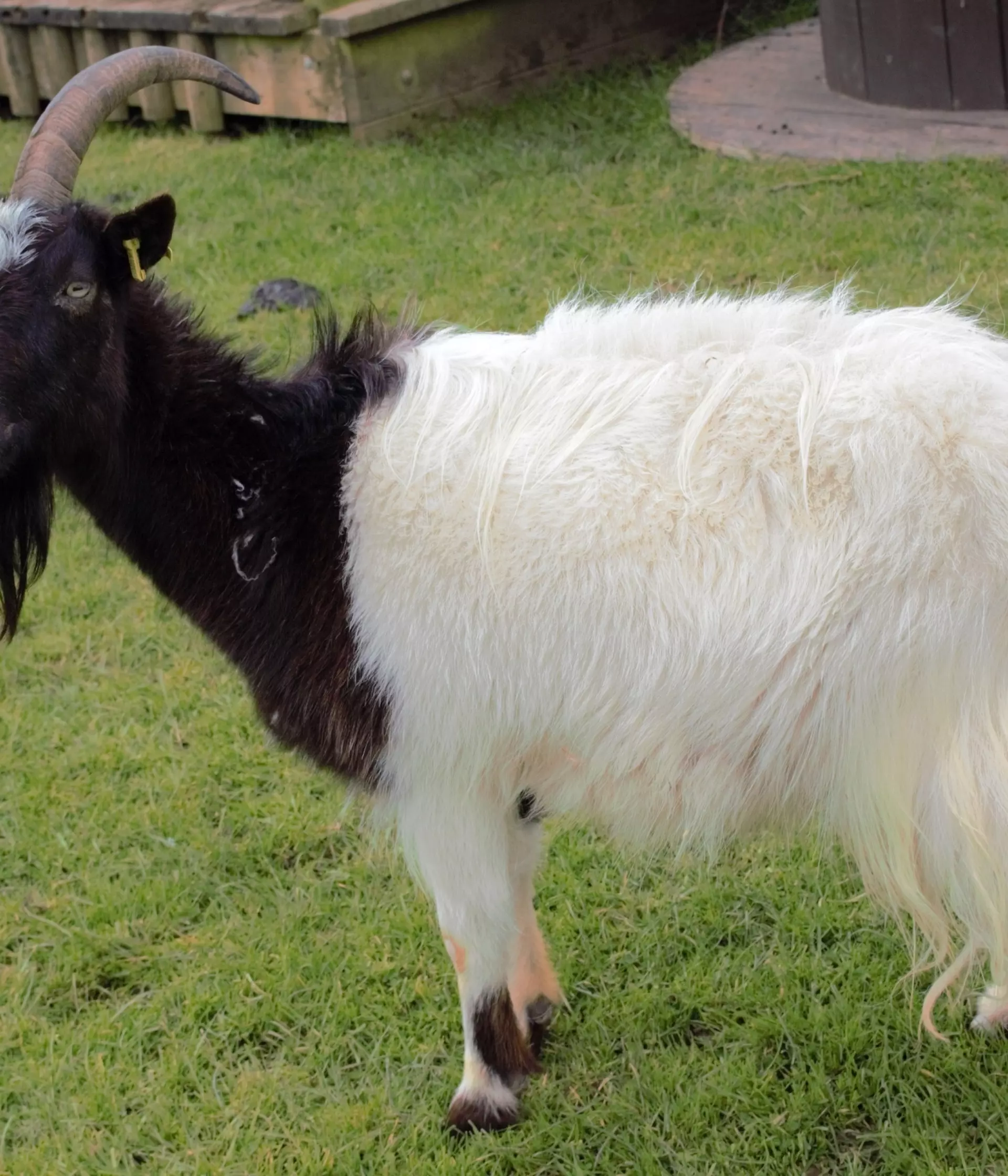About our Bagot Goats
We have two male Bagot goats at Whipsnade named 'Gary and 'Kevin'. Gary is the most cheeky and acts more like a dog than a goat! Kevin has a black leg so you can tell the difference between him and Gary. They are part of our Hullabazoo farm yard fun show and they love when they get walked around the zoo, especially eating all the browse.
Bagot Goats facts
- Bagot goats are believed to be Britain's oldest breed of goat. They get their name from Sir John Bagot who was the owner of the first recorded herd of Bagot goats brought to England in 1389 and are even featured on the Bagot family coat of arms!
- Bagot goats are often used to help clear scrubland as they prefer to browse on hedges and thicker vegetation over grazing on grass.
What do Bagot Goats look like?
Bagot goats have a distinctive two-toned coat. The front half, including the head, neck, and shoulders (and sometimes down their legs), is a sleek black. Their back half, including the hindquarters, is a bright white. Some Bagot goats also have a white blaze running up their face. Both males and females have impressive and long curved horns.
What do Bagot Goats eat?
Like most goats, Bagot goats are browsers. This means their diet consists mainly of leaves, twigs, shrubs, and other tasty plants they find.
Where are Bagot Goats from?
Bagot goats have a long history in England with the earliest known herd living in Staffordshire. Their exact origin is a bit of a mystery, but it's believed they may be descended from goats found in northern Europe and Scandinavia.
Gary and Kevin aren't the only goats at the zoo, we've also got Doris and Betty the Golden Guernsey goats and six pint-sized pygmy goats.
